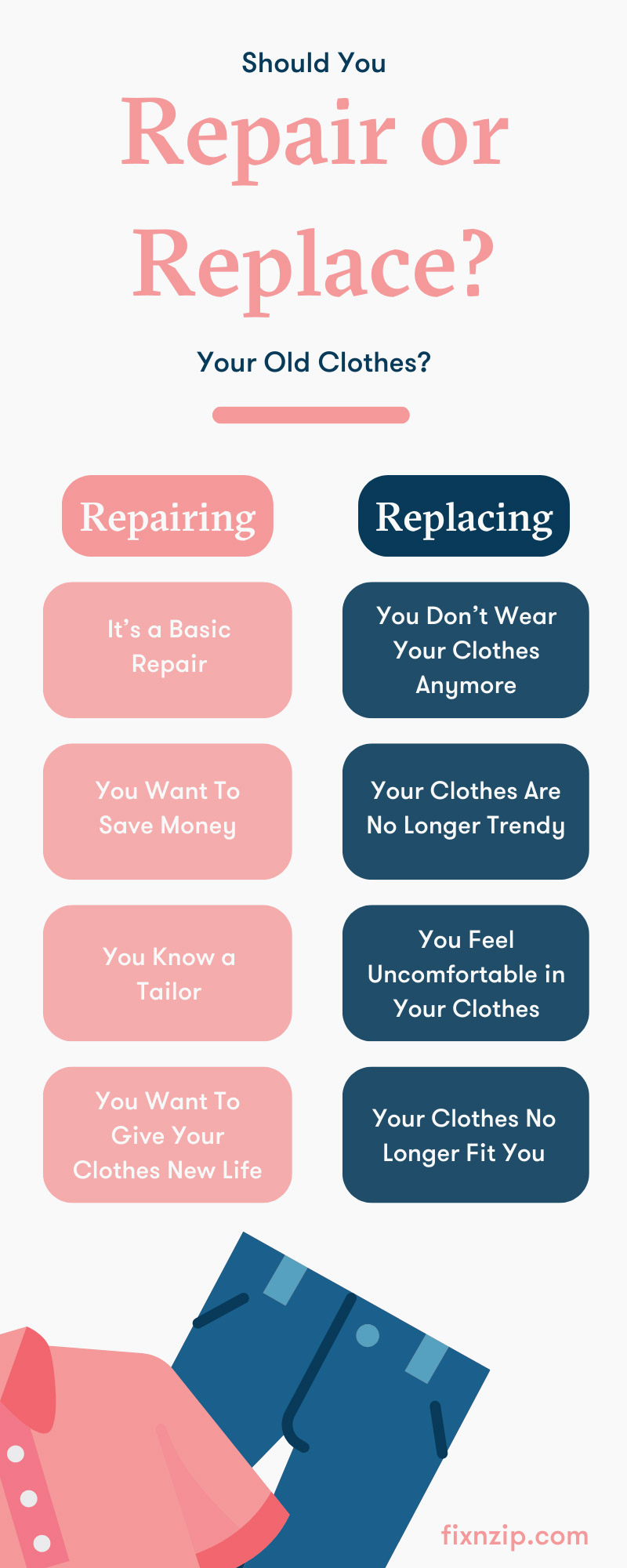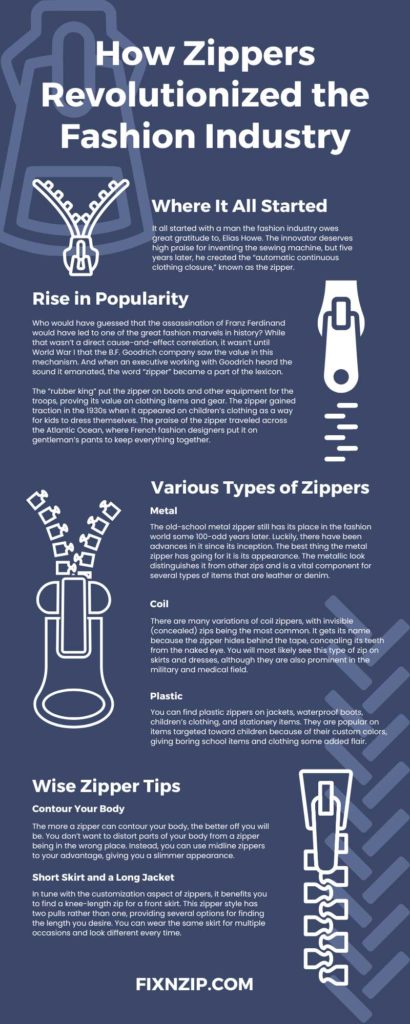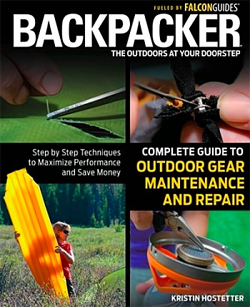Anya Peters eloquently said, “where there’s bad, there’s always good nearby. That’s nature’s way.” This thought remains true in some ways for World War I. While the atrocities of the war are obvious, the historical moment helped create some useful inventions we still use today, with one of those innovations being the zipper. Let’s teach you how World War I helped promote the zipper.
The zipper concept dates further back than World War I, but it didn’t have the name as we know it today. Elias Howe patented the idea in the early 1850s, yet it wasn’t until 1893 when Whitcomb L. Judson created “closing devices with a slide mechanism.” Judson coined his invention the “clasp hooker” and began his own business. Unfortunately for Judson, the updated mechanism tore more clothing than it fastened.
Judson’s protégé, Gideon Sundback, had bigger and better ideas for this gadget, so he patented his version of the fastener in 1917. Sundback had a more modern touch since his version is virtually the same type of zipper we still see today.
Sundback started his business with the more effective fastener and had tremendous success. He could credit Robert J. Ewing as the main reason for his prominence because Ewing used the zipper in money belts.
World War I had catastrophic results for many families, cities, and countries. But one of the few winners was Sundback because Ewing’s vision of using Sundback’s invention on money belts took off.
Considering that uniforms didn’t have pockets, money belts were helpful to keep soldiers’ items safe and secure with a closed zipper. Before the zipper, buttons were the most common form of fastening, and Sundback’s clasping device proved it’s worth sticking around.
With the war in the rearview mirror, Sundback’s company kept trucking along while B.F. Goodrich came up with the name “zipper” for the product because of the sound it made.
Sundback’s company made well over 10,000 zipper products, receiving plenty of acclaim. Two of the most popular zipper items were boots and galoshes because of how functional the zipper was for footwear.
It’s astounding to think it took a battle across the globe for zippers to catch on. But now that you understand how World War I helped promote the zipper, you can take that as a silver lining.
FixnZip continues the innovation made all those years ago as we have invented some of the best zipper partstoday! Our extraordinary zipper can handle any of your zipper concerns, whether it’s jammed, or you need a replacement. If you have any questions, don’t hesitate to reach out; we’ll be happy to assist you.
Undoubtedly, everyone has a pile of clothes in their closet or dresses that hasn’t seen the light of day in weeks, if not years. Rather than allowing it to collect dust and take up space, maybe it’s time to reevaluate things and make tough decisions. When assessing your older clothes, deciding whether to repair or replace them can be difficult. So, let’s go through the thought process for each decision.
There are many reasons why someone opts to repair their older clothes. You can’t put a price on sentimental value, so that could carry more weight than the cost of the job. When making a pros and cons list, you can see if the following reasons why repairing is the correct decision apply to your situation.
Sewing skills come in handy when you must repair a small tear in a garment, add a button, or put on a new zipper. If you’re not confident in your capabilities, you can become a student of YouTube. The tutorial videos there will guide you through clear step-by-step demonstrations and explanations. Plus, acquiring such skills will be useful for any other textiles that have imperfections now or down the line.
While the opportunity cost doesn’t have a monetary value, the real dollars and cents play a significant role in your decision-making. The average costs of alterations and repairs are between $20 to $50 per item. When the repairs are substantially less expensive than what it would cost to buy something new, it makes sense to repair a clothing item.
Living in a populous city makes you more likely to find a tailor. Thus, you can help a small business by bringing in your damaged goods and letting the tailor work their magic. It’s a win-win situation for all parties involved.
There could be several reasons you no longer want to wear the clothing item in question. Nevertheless, that doesn’t mean it no longer has a purpose. You could upcycle it to make something better.
Upcycling repurposes your garments and turns them into unique items near and dear to your heart. To begin, don’t start with an elaborate project. Keep it simple and use something you don’t want to wear again, such as a ratty t-shirt.
Let your imagination run wild from there. Doing so will help you create something from nothing that can show off your personality. There’s no limit to what you can do when upcycling clothes, considering you can do some of the following projects:
Tucking away flawed clothing is typical in most people’s closets. Instead of keeping it there to take up space for items you want to wear, consider giving it the good old heave-ho if it falls into one of the following categories.
The most obvious sign that you should replace the item is that you no longer wear it. There are probably several reasons why you buried the clothing article in your closest, so let it go to let your new items in. Stop delaying the inevitable and toss clothes you aren’t going to wear. It will save time when you next go through your wardrobe.
Fashion trends come and go like clockwork, making some wardrobe choices from the past seem questionable now. If you have a jacket that looks like something a character from That 70’s Show would don, and that’s not your style, you may want to get rid of it and bring trendier clothes into your life.
If you’re sighing and grunting with every movement because your pants are riding up on you or the fabric is making you itch, then there’s no hope for this garb in the future.
It’s easy to fall victim to your emotions when you’re going through your things. You could find a t-shirt of your first concert, a TV show you used to love, or one of those ironic shirts that give you a chuckle.
Regardless of their sentimental value, they may have no use for you now. Sentimental items are perfect for upcycling if you feel so inclined. But if arts and crafts aren’t your jam, then an emotional sendoff is in order.
Weight fluctuations are common, even for the most adamant workout warriors, so many folks are prone to keep clothes that accommodate their various body sizes. Ditching your old clothes might even provide the motivation you need to fit into those items again. But if you know that isn’t in the cards in your future, then there’s no point in keeping them around.
Even if a repair is easy for you to complete, it could still be a process that takes quite a bit of effort to finish. Weighing the opportunity costs of the time it will take to repair your items and to replace them provides insight into the best course of action.
Some items aren’t worth repairing. The odds are that low-cost, dime-a-dozen garments will rip easily. So it’s a mistake to spend time fixing them in the first place. But it may be worth spending the extra time restoring costly apparel with high-quality construction.
Assessing your older clothes and deciding if you should repair or replace them can be an enjoyable experience. It can take you on tour down memory lane and free up some much-needed space so that you can include wardrobe selections that you appreciate and use more.
If you want to repair clothes, you can use our zipper slider replacement for any garments needing a new zipper. Our one-of-a-kind zipper kit will save you time and doesn’t require any sewing skills. The FixnZip works for a wide range of zipper sizes and styles, so grab it today to repair anything from your clothing to a sleeping bag.

When we put on a jacket, boots, skirt, or pair of pants, we instinctively go straight to the zipper to fasten things up. But zippers weren’t always around, so how did zippers revolutionize the fashion industry? Let’s see take a look at how it all started and where it is today.
Before we delve deep into the zipper’s rise to prominence, it’s nice to understand its storied history, so let’s take a brief glimpse at how the zipper came about. It all started with a man the fashion industry owes great gratitude to, Elias Howe. The innovator deserves high praise for inventing the sewing machine, but five years later, he created the “automatic continuous clothing closure,” known as the zipper.
From that point on, the concept of the zipper worked its way through two more men. Whitcomb Judson made the “clasp locker” to help aching individuals bend over and fasten their shoes. Whitcomb’s lead engineer, Gideon Sundback, made the teethlike zipper we see today.
Who would have guessed that the assassination of Franz Ferdinand would have led to one of the great fashion marvels in history? While that wasn’t a direct cause-and-effect correlation, it wasn’t until World War I that the B.F. Goodrich company saw the value in this mechanism. And when an executive working with Goodrich heard the sound it emanated, the word “zipper” became a part of the lexicon.
The “rubber king” put the zipper on boots and other equipment for the troops, proving its value on clothing items and gear. The zipper gained traction in the 1930s when it appeared on children’s clothing as a way for kids to dress themselves. The praise of the zipper traveled across the Atlantic Ocean, where French fashion designers put it on gentleman’s pants to keep everything together.
Not only is the zipper important to the fashion world, but without it, we wouldn’t have some of the common items in today’s world. It was a key part of designing resealable bags and Velcro.
Today, there are three versions of the zipper you will find on items ranging from luggage to pants. Learning what they are and where they are most commonly used can help you if you need a replacement.
The old-school metal zipper still has its place in the fashion world some 100-odd years later. Luckily, there have been advances in it since its inception. The best thing the metal zipper has going for it is its appearance. The metallic look distinguishes it from other zips and is a vital component for several types of items that are leather or denim.
Designers shy away from metal zips if the item is continuously used because of its lack of flexibility. However, using a metal zipper is the correct choice for items that you seldom wear or that need an edge to them.
There are many variations of coil zippers, with invisible (concealed) zips being the most common. It gets its name because the zipper hides behind the tape, concealing its teeth from the naked eye. You will most likely see this type of zip on skirts and dresses, although they are also prominent in the military and medical field.
In contrast to other kinds of zips, which often employ thicker woven materials on the tape, ordinarily, invisible zips use lighter, lace-like textiles, making them ideal for various pieces of apparel. There is another form of an invisible zip, dubbed the invisible identical zip. The identical zipper is a reversed coil zip that disappears. You will see these fasteners on items that require a larger gauge than what genuine invisible zips offer.
As time went on, the plastic zipper gained steam because of the colorful options for fashion designers, and no one had to worry about a plastic zipper snagging their clothes. The molded polymer material helps make the zip more durable and water resistant. One drawback of the plastic zipper is that it’s expensive due to the material it requires to manufacture.
You can find plastic zippers on jackets, waterproof boots, children’s clothing, and stationery items. They are popular on items targeted toward children because of their custom colors, giving boring school items and clothing some added flair.
With an idea of the types of zippers you see on clothing in your mind, it’s time to consider these fashion tips when you don a zipper-laden article of clothing.
The more a zipper can contour your body, the better off you will be. You don’t want to distort parts of your body from a zipper being in the wrong place. Instead, you can use midline zippers to your advantage, giving you a slimmer appearance. Additionally, zippers can give an optical illusion of lengthening your body to make you look taller than you are.
One thing that makes zippers useful is they allow for constant customization. If you need to look professional, you can take it to the top for the business look. And if you are heading out on the town with your friends, you can be more fashionable. Regardless of the occasion, skirts, shoes, tops, or coats can look the part, giving you confidence in your stylish look.
In tune with the customization aspect of zippers, it benefits you to find a knee-length zip for a front skirt. This zipper style has two pulls rather than one, providing several options for finding the length you desire. You can wear the same skirt for multiple occasions and look different every time.
Assuming you are not the next “King of Pop,” the odds are you aren’t going to make a leather jacket with an abundance of zippers look cool. Thus, don’t overdo it when making or purchasing items with several zippers, and avoid wearing multiple items with a cornucopia of zips. The best strategy is to mix and match your style. If you have a leather jacket with zippers all over it, opt for a standard pair of pants or a simple skirt. Look in the mirror and use your best judgment on if it looks too busy or not before you depart.
While most designers focus on adding zippers to premier articles of clothing like skirts, jackets, and pants, they have diversified their portfolios by adding them to shoes and other handy accessories. A pair of leather boots can go well with a well-tailored ensemble, as will a handbag attached to your hip. There’s no limit to what you can do to look stylish and capitalize on the zipper’s unique look.
I doubt Elias Howe could have imagined how zippers would revolutionize the fashion industry, but we are a population dependent on having these fasteners make our lives easier. FixnZip also wants to make your life easier with our state-of-the-art replacement kit to handle any complication that arises from a faulty zipper. Browse our zipper sliderssizing guide and the color options to find the perfect one for you!

Buying the same arts and crafts that anyone can get is boring. Opting for do-it-yourself projects allows you to showcase your creative side. These eight project ideas for DIY crafts with zippers will give your wardrobe or decor some flair.
If you want to spruce up your headband game, you can try making your own with a zipper. There isn’t much to it, considering all it requires is a zipper and a couple of bobby pins. Just pin each side of the zipper to your hair, and you can even open the zipper for a more interesting appearance.
A lamp with a dying bulb is too dim, and a new bulb makes things too bright. A useful DIY craft is making a lamp with zippers as the shade. You can adjust the illumination based on how many zippers are on the shade. As you unzip the shade, it becomes brighter, and vice versa if you enjoy a darker room.
A DIY project you can complete before your favorite song finishes is zipper stud earrings. Remove the zipper head and attach it to a stud, and you’ll have a new pair of earrings. You can make some in multiple colors to match any ensemble.
In the same vein as the earrings, you can easily make a set of zipper bracelets for another funky accessory. It’s an inexpensive project that occupies your time and accentuates your sense of style. You can give matching colors to a loved one or friend to signify appreciation for them.
Young children tend to gravitate toward anything that makes noise, which is why many enjoy playing with zippers. You can make an entire book of the fasteners so they can zip to their heart’s content.
You could probably fill a tree with original ornaments from DIY projects, and now you can add another. You can make a zipper ornament in one of two ways. The easiest way is to get a standard zipper and find a colored zipper pull that matches.
Another way is to find designs that appear after unfastening, such as plaid, polka dots, or stripes, and add them around the ornament. Either way, you’ll have something clever and original for your tree.
Instead of spending a bunch of money on a new bag or purse, how about making one out of zippers? There’s no limit to the style of bag you can construct, so feel free to get as innovative as you want in size and style.
It’s nice to have small containers for knick-knacks, but keeping track of the lids can cause problems. You can ditch the lid when you add a zipper to the bottom of a small plastic bottle. Cut the bottom of the bottle and wrap a zipper pull across it to keep your things secure.
You can try these eight DIY projects with zippers solo or with your family. Fixznip can help with dependable zipper pull replacements. Please browse our store to find the color and style you need!
There are many things in our lives we take for granted. We often do not know the origins of the things we use every day. One thing you might not have considered is why some garments have zippers on the left while others have them on the right. Let’s delve a little deeper and find the answers.
This year’s theme for the Met Gala was “The Gilded Age.” While many A-listers didn’t stick with the theme, the Gilded Age was a time of extravagant gowns and dresses next to impossible to put on by yourself.
Women during the Gilded Age needed a helping hand to put on a dress. It was easier for someone to button up the dresses on the right, considering most people are right-handed. Additionally, mothers often hold their children with their non-dominant arm to feed them. It’s much more convenient for right-handed women to feed their children when their clothing accommodates them.
This theme continued for women’s clothing over the years once the zipper became a norm as women’s garments usually have the zipper on the left. There’s truly no rhyme or reason why this continues. All it does is fuel the left-handed people who claim the world is against them.
While women were stuffing themselves into corsets, men were dueling in the streets or fighting in wars. Thus, they needed to have a firearm close to their person. Men usually had a holster or sheath on their left side. In the same notion that right-handed people are at the forefront of the fashion world, men needed to grab their pistol quickly, and it’s much easier to go across with your dominant hand.
It’s also possible that the country of origin determines where the zipper is. You can go into your closet and look at your jackets or dresses. European designers will typically fall in line with men’s zippers on the right and women’s on the left. You can thank the monarchy for that. In North America, it’s a bit of a mixed bag, so it may be interesting to inspect your clothing and see if you notice a trend.
The truth is that no one can definitively answer why some zippers are on the left and some are on the right. We only have theories, although they’re highly logical ones that seem to stand the test of time. If you have a zipper on the left or right that’s causing a nuisance, consider getting a FixnZip zipper repair kit. Compatible with any zipper, the FixnZip can solve your zipper needs, so get one today!
If you’re an avid boater, then you know that boats have zippers everywhere. You’ll find zippers on the bridge enclosure, the boat cover, seat cushions, life jackets, and even non-boat-specific items like duffel and gear bags or your fishing vest. It’s a pain to have a zipper break on a gear bag or vest, but it’s a shot in your wallet to have your zipper fail on something big like a boat cover. You’re talking feet and feet of zipper length to replace, for roughly the cost of an arm and a leg. Luckily, we’ve got you covered, both your boat and your wallet, with the FixnZip®.
FixnZip® is a replacement zipper slider that fixes a broken zipper without tools or sewing. That means if a zipper breaks when you’re out on the water, you can just pull out your spare FixnZip® and have an easy marine zipper repair in a few seconds. Not too long ago, a guy brought his sail cover into our office trying to find an alternative to paying a seamstress hundreds of dollars to replace the 30-foot-long zipper. Within a few seconds, and for under $10, he had the FixnZip® installed on the sail cover and the zipper working again like new.
How does it work?
The FixnZip® is a replacement zipper slider (the little box you pull up and down on the zipper teeth to open or close a zipper). Whether the teeth on your zipper are separating and won’t stay closed, the zipper is jammed, or the slider breaks or falls off, the FixnZip® can fix it. Check out this video to see how it works on a bridge enclosure:
Will the FixnZip® rust in salt water?
No! It’s made of zinc and stainless steel and is completely non-corrosive. The FixnZip® is popular in the diving industry because of how well it works on wetsuit zippers, and there’s no risk of it ever rusting. The boating industry is catching wind of the FixnZip®, too. Check out the write-up we got in Great Lakes Boating Magazine (page 51).
Where can I get a marine zipper?
We have a full selection in our online store, or you can visit one of our retailers.
If you have any questions, feel free to call or email us using the Contact page, or hit us up on Facebook or Twitter. Now get out there and enjoy the rest of the summer on the water without worrying about your boat’s zippers, or about your wallet.
Jonathan
Let me begin by saying that I hate to shop for pants. It seems like a miracle when I can actually find a pair that fit right AND are on sale. So you can imagine my frustration when the zipper on my semi-new golf shorts broke (kind of like that time I had a broken golf bag zipper).
I was hanging out with the relatives after a nice family dinner, and I realized my shorts zipper had jammed. Sure it was big meal, but I didn’t eat THAT much. Anyway, the zipper was zipped up about half, but the teeth had separated. It was one of those small zippers with the brass teeth. I tried several times to pull the zipper slider (the thing that connects the teeth) back down to the beginning to get it started again, but even after applying pressure with pliers (a tip I picked up from youtube) I couldn’t get the teeth to connect.
The teeth were fine, but the zipper slider needed to be replaced. Normally to do that, you have to un-stitch the old zipper and sew a new one in. Although my wife is an excellent seamstress, she wasn’t too keen to take on the hassle. After having success with the FixnZip® on my golf bag, I decided to try the new size “small” for my zipper repair for pants. For those of you have haven’t read my other post, FixnZip® is a replacement zipper slider that can be installed with no tools and no sewing. So, here’s how to fix a broken zipper on pants.
Since the old brass slider was shot, I removed it with a pair of pliers (technically I could have left it on if I wanted to test the FixnZip® first). I just loosened the thumbscrew on the FixnZip® replacement slider, slipped it over the teeth at the beginning of the zipper track, and tightened the thumbscrew back down. Just like that, the zipper was back up and running.
In addition to shorts, the small is great for items such as jeans, skirts, garments etc. It’s available for purchase at the FixnZip® Online Store for $9.99. And starting at the end of March, you’ll be able to buy the FixnZip® at JoAnn Fabric Stores nationwide.
Still skeptical? Here’s an adorable blog review of the FixnZip® size “small” being used to repair a broken zipper on a pair of children’s pajamas (Click here for Blog Review). If you have any questions on how to fix a broken zipper on pants with FixnZip®, please feel free to email me using the “Contact Us” page or hit us up on Facebook and Twitter.
Jonathan
We're very excited about all the positive feedback we've been getting since the launch of the FixnZip™, and we wanted to take a moment to share it with you. From blog reviews to awards at tradeshows, and even a feature in a recently published book, people seem to be happy with the product. But why brag about ourselves when other people can do it for us? Here are some links to the various FixnZip awards and reviews we have received from experts in a range of fields. Don't forget to check back as we update the list.
Do you have a review of your own? We love hearing what people think of the product and how they are using it. So head over to our Facebook page and tell us about your experience with FixnZip™.
 |  |  |
| FixnZip™ was selected as a "Hot 20" product at the 2013 Craft and Hobby Show. | Thirty thousand new products were Introduced at the 2013 International Housewares Show. FixnZip™ was awarded in the Top 5 of its category. | Backpacker Magazine included FixnZip™ in it's book the "the Complete Guide to Outdoor Maintenance and repair" |
 |  | Product |
| FixnZip™ was included in Exploring Elements "Top 10 Survival Products" In a review of the Craft and Hobby 2012 Summer Show, FixnZip™ was | In a review of the Craft and Hobby 2012 Summer Show, FixnZip™ was considered to be the most innovative product. | Product Pioneer featured FixnZip™ on its blog, giving you a look at the background of our company. |
Welcome to the very first FixnZip blog post. My name is Jonathan and I’ve been working at FixnZip for about a year. In my time working here, I’ve gathered more information about zippers than any normal person should. As I’ve talked with our customers, I’ve realized that there’s a general lack of information about zippers out there. There’s even less on zipper repair.
Whether you like to go camping, boating, golfing, hunting, fishing, traveling, or surfing, the world of zippers is enormous. Heck they even zip you up in a body bag when you die. Everyday life is filled with zippers, and yet we have no idea what to do when a zipper breaks. That is why I decided to start a blog dedicated to zipper repair and zipper education. I’ll be updating about twice a week and posts will cover topics from zipper sizes to diverse applications of the FixnZip product. I’ll also be giving updates on upcoming products and promotions.
If you have questions, comments, or have a topic you want me to cover, you can comment below, facebook me, or use the “contact us” page on the FixnZip website. I hope you enjoy, and stay tuned for updates.
Jonathan
